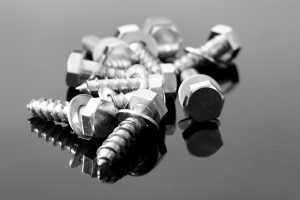
All screws are designed with external threading so that they can be driven into an object or surface. On the shaft of a typical screw, you’ll see helical grooves. Known as external threading, these grooves essentially dig material out of the object or surface in which the screw is inserted. Not all screws, however, feature complete threading. There are both partially threaded as well as fully threaded screws.
What Is a Fully Threaded Screw?
A fully threaded screw is a type of fastener that’s characterized by complete external threading on the shaft — also known as the shank — as well as a pointed tip.
Fully threaded screws have three basic parts: the head, shaft and tip. The head is the top part of the screw that supports the use of a specific type of screwdriver bit, whereas the tip is the pointed end of the screw. Of course, the shaft is the long body of the screw that contains the external threading. In a fully threaded screw, the shaft is completely covered with external threading.
What Is a Partially Threaded Screw?
As you may have guessed, a partially threaded screw is a type of fastener that’s characterized by only partial external threading on the shaft. Like other screws, it still has a pointed tip, which is used to drive the screw into an object or surface. The shaft, however, isn’t completely covered with external threading.
Partially threaded screws contain four basic parts: the head, unthreaded shaft, threaded shaft and the tip. The unthreaded shaft is the section directly below the head that doesn’t contain threading. It’s not uncommon for a partially threaded screw to have one-quarter of the shaft smooth, while the remaining three-quarters of the shaft features external threading. The smooth section of the shaft without threading is known as the unthreaded shaft. Only partially threaded screws feature an unthreaded shaft. Fully threaded screws feature complete external threading on the shaft.
You might be wondering why some screws are designed with only partial threading. Well, the lack of complete threading allows for a higher level of security with the connected objects. If you’re trying to join a sheet of plywood to a 2×4, for example, you might want to use a partially threaded screw. Since the threads are at the bottom portion of the screw, they’ll remain only in the 2×4, essentially “gripping” it. At the same time, the partially threaded screw will pull the plywood and 2×4 together to create a stronger and more secure hold.
